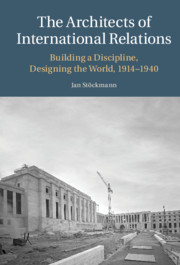Book contents
- The Architects of International Relations
- The Architects of International Relations
- Copyright page
- Dedication
- Contents
- Acknowledgements
- Archival Sources
- Abbreviations
- Introduction
- 1 Wartime Origins
- 2 Genesis of a Discipline
- 3 Peace in the Minds of Men and Women
- 4 Professors as Diplomats
- 5 Testing Collective Security
- 6 The End of World Affairs
- Conclusion
- Index
6 - The End of World Affairs
Published online by Cambridge University Press: 24 February 2022
- The Architects of International Relations
- The Architects of International Relations
- Copyright page
- Dedication
- Contents
- Acknowledgements
- Archival Sources
- Abbreviations
- Introduction
- 1 Wartime Origins
- 2 Genesis of a Discipline
- 3 Peace in the Minds of Men and Women
- 4 Professors as Diplomats
- 5 Testing Collective Security
- 6 The End of World Affairs
- Conclusion
- Index
Summary
This chapter examines the intellectual and institutional challenges that the architects of International Relations (IR) faced during the 1930s. It first shows how the Nazi government nationalised research centres and forced scholars into exile, essentially eliminating the independent study of IR in German-speaking Europe. The second section reviews how Hitler’s rise to power was perceived by the IR community and how scholars struggled to make sense of his foreign policy agenda. The third section inspects ‘peaceful change’ as a political idea. The fourth section explores its application as a policy instrument, notably Arnold Toynbee’s quasi-diplomatic ventures to Germany. The final section traces the gradual demise of IR scholarship, from financial and political difficulties in the mid-1930s to the complete suspension of activities within the first year of the Second World War.
- Type
- Chapter
- Information
- The Architects of International RelationsBuilding a Discipline, Designing the World, 1914-1940, pp. 248 - 292Publisher: Cambridge University PressPrint publication year: 2022

